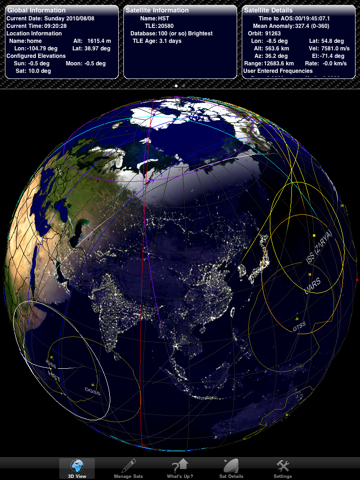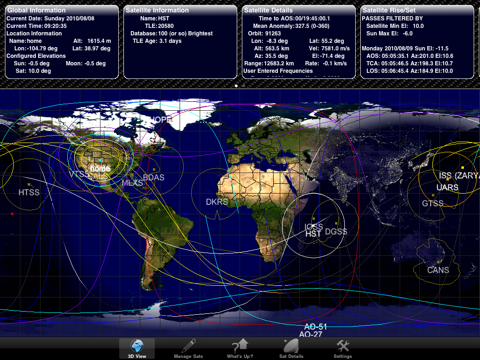
Well after a BUNCH of work, I have managed to consolidate all of the SatSeries of apps (ProSat, HamSat, ISS and their iPad cousins) into a single universal application that provides access to different features via a subscription model. The "Classic" versions of the app will continue to be supported for defects through the end of the year but all new feature development will be focused on the new universal application.
So, head over to the new Satellite Tracker application (https://itunes.apple.com/us/app/satellite-tracker/id1438679383?ls=1&mt=8) to keep up on all the new features!
73,
-W0VOS aka Craig
--
ProSatHD is the iPad specific version of the ProSat application. The applications UI has been completely re-worked to take full advantage of the iPads increased screen size.
You can check out a quick overview of the app at http://www.youtube.com/watch?v=tiHCGxV0WM8.
Also, you can download the Users Guide at http://www.vosworx.com/images/docs/SatSeriesHD.pdf.
That said, this application allows access to the following satellite databases from www.celestrak.com.
-100 (or so) Brightest
-Last 30 Days Launches (or so)
-Amateur Ham Radio Satellites
-CubeSats
-Disaster Monitoring
-Earth Resources
-Education
-Engineering
-Geodetic
-Geostationary
-GOES
-GPS Operational
-Intelsat
-Iridium
-Molniya
-NOAA
-Orbcomm
-Search & Rescue (SARSAT)
-Space & Earth Science
-Space Station
-Weather
The application will calculate the rise/set times and associated azimuth and elevation for the selected satellite, Sun or Moon given either the user entered or network retrieved location. There are two modes for satellite rise/set calculations. The first is for those folks wanting to know all overflights for a given location (like Ham radio operators) while the second mode computes only those passes where the satellite would be visible to a ground observer. In the ground observer mode, the calculations not only take into account that the ground is dark but also that the satellite is in sunlight (it even takes into account if the satellite becomes lit or unlit during the pass)
In addition, you can see the Earth rendered either as a 3D globe or a 2D map using photo realistic texture maps for the Earth model. The orientation of the map is easily changed by a simple rotation of the device from portrait (3D) to landscape (2D). In either orientation you can zoom in and out as well as pan using the touch screen.
There are more than a dozen controls provided to allow you to customize how the application works to meet your specific needs (type of Earth texture used, location, type of overflight calculated...)
--- Question & Answer ---
Thanks to everyone who has sent in their questions/requests that have led to this application being created.
Keep them coming!
-Craig ([email protected])



